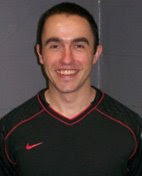I was recently asked to share some of my thoughts in a quick Q&A session with the owners of EXF, so here's what I had to say.
What are your favourite training techniques?
Anything with a good transfer of training effect. I’m not a coach that favours one training technique over another – I’m a coach that will use a variety of training techniques, if it works I use it, if it doesn’t then I don’t! It’s about getting results so I’ll use whichever technique is the most effective
What are the most common mistakes made in gym design and training?
1. Lack of floorspace – equipment is important but if you ask any coach what they would like more of they will all shout at the top of their voices “space”. With the increased popularity of functional training space is probably the number one consideration when designing a gym.
2. Not considering usage and traffic flow – too much equipment is going to cause bottlenecks if all of your clients or athletes want to use the same piece of equipment.
3. Low Ceilings – you need to get a facility with as much ceiling height as possible, realistically you don’t want your ceiling to be lower than 3.5m – the more the better.
4. Functionality – make sure the equipment that you purchase can perform an number of tasks. When kitting out our small facility we chose equipment that was portable and could perform a number of tasks. We chose carefully and now our clients can perform almost any exercise they want in a very small space.
What advice can you give about purchasing equipment for a functional performance training area?
Athletes have to be able to compete in a multidimensional environment. The equipment that you choose for your performance training has to work multi dimensionally. Your equipment also needs to be able to withstand the demands of performance training. Buy the best equipment that you can afford (it will be money well spent in the long run) and make sure that each piece of equipment that you purchase can perform several tasks.
What is the key to the success of your training?
We don’t blindly follow the training principles of industry ‘gurus’. We base our training on results – pure and simple. If a technique works we will use it, if it doesn’t we won’t. We keep our training simple and we make sure that we maintain a consistent approach to how we train our clients! That’s not to say we don’t make changes to our training methodology, we just make sure that the small changes are in line with our overall training paradigm.
What do you think is in the future for training?
I think that the industry is increasingly seeing the benefits of “functional training” and more and more of the general population want to train like ‘athletes’. Resistance machines are here to stay and will continue to take up floor space within the big gym chains but I think more and more health clubs and gyms will have dedicated “performance areas” where clients can train dynamic athletic movements, whether it’s for sport or simply a healthy lifestyle. Sports people “get it”.....the general public are starting to wake up to the fact that if they want to get results they need to train differently – sitting on a machine is not how we move around and function in day to day life.
How do you make sure your personal training clients reach their goals and keep coming back?
Fist of all we actually set training goals! Our clients don’t simply turn up and make it up as they go along. We provide them with the ‘road map’ that will help them get from their starting point to their chosen destination. We make sure their goals are SMART and we keep them at the forefront of our minds during every training session. What keeps them coming back? Results! Whilst most gyms are focusing on gym memberships, fads and crazes we focus on producing results. Most of our clients come to us because they are fed up of training with little or no improvements. When they come to GENR8 Fitness they see the results and they stick around for more!
What is the most important lesson you have learned about training athletes?
Each athlete is an individual. If you are still writing sport specific or position specific programmes then you are selling your athletes short. You must treat your athletes as individuals......evaluate your athlete and then programme according to the information that you have gathered during the evaluation, and finally don’t be afraid to change the programme – training should be a process not a prescription.
Where do you find new idea’s?
I was recently presenting at a conference and one of the other presenters said “Half of what we know is wrong – the problem is that we don’t know which half!” We need to keep on learning, we don’t know it all and the minute that we think we do is when we should find another job. I’m looking for ideas all of the time and they come from the world of sport and fitness (coaches, athletes), internet, books, DVD’s or seminars. I’ve also looked outside of sport and spent time with ballet dancers and performers from Cirque du Soliel (if you think your athletes train hard spend some time with people in the performing arts!). The most important thing is don’t believe everything you read.....and don’t only read everything you believe!
Wednesday, 3 December 2008
Subscribe to:
Post Comments (Atom)




No comments:
Post a Comment